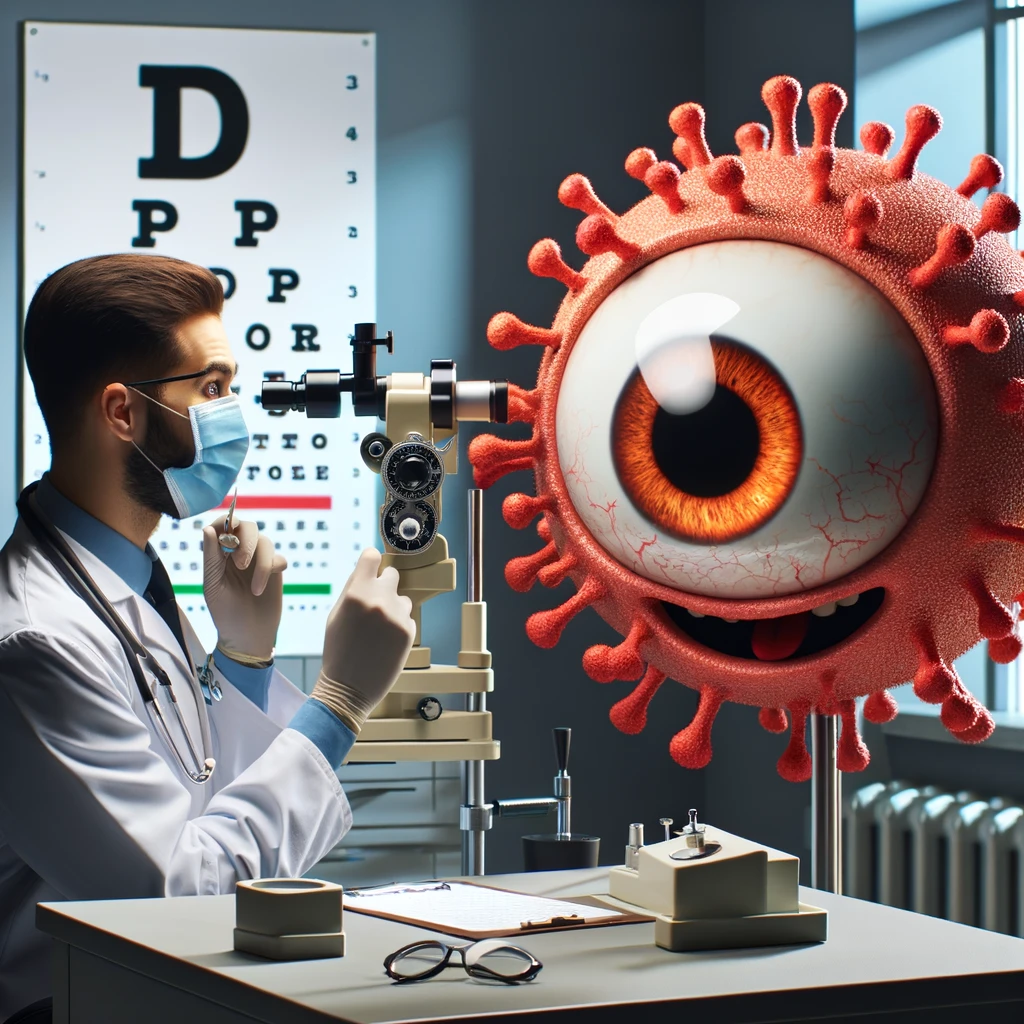
Introduction
In the face of the COVID-19 pandemic, businesses across the globe have been faced with unprecedented challenges, particularly those requiring close personal interactions, such as optometrist practices and glasses shops. The nature of these services, involving up-close vision exams and the trial of glasses frames by numerous customers, presents unique difficulties in ensuring the safety of both staff and clientele. Amid these challenges, it has become imperative for such businesses to adapt their operational models not only to continue serving their communities but also to maintain a safe environment for everyone involved.
This article aims to guide optometrist practices and glasses shops through the necessary adaptations to operate safely during these times. By understanding the specific risks associated with their services, implementing comprehensive safety measures, leveraging available technology for efficiency and reduced contact, and maintaining clear communication with customers, businesses can navigate the pandemic’s challenges. These adaptations not only help in mitigating the spread of COVID-19 but also set a new standard for customer service and care in the vision industry. Through simple language and an informational tone, we will explore these strategies, offering a roadmap for vision care providers to follow in these uncertain times.
Section 1: Understanding the Risks
When we think about visiting an optometrist or a glasses shop, we often consider the personal interaction and close contact involved. During a vision exam, optometrists come very close to their patients to examine their eyes, and customers usually try on multiple pairs of glasses frames to find the perfect fit. However, in the era of COVID-19, these everyday practices carry additional risks that need careful consideration.
The primary concern is the transmission of the virus, which can occur through close contact with an infected person or by touching surfaces that have the virus on them, like glasses frames or optometry equipment. Since the virus can spread from people who do not show symptoms, it’s challenging to know who might be contagious. This situation makes the optometrist’s office or glasses shop a potential risk area for both customers and staff, especially without appropriate safety measures in place.
Another risk involves the shared use of optometry equipment and glasses. Equipment used in eye exams and the frames customers try on are touched by many people throughout the day. Without proper sanitation between uses, these items could facilitate the spread of COVID-19.
Understanding these risks is the first step towards creating a safer environment for everyone. By acknowledging the ways in which the virus can spread within their specific settings, vision care providers can implement targeted measures to protect their staff and customers. This involves a combination of enhanced cleaning, personal protective equipment, and modifications to how services are provided, which will be explored in the following sections.
Section 2: Implementing Safety Measures
Once we understand the risks involved in vision care during the pandemic, the next step is to put safety measures in place. These practices are designed to minimize the risk of COVID-19 transmission within optometrist offices and glasses shops, ensuring a safe environment for both customers and staff. Here’s how:
Appointment-Based Services
Switching to an appointment-only system helps control the number of people in the store at any one time. This setup makes it easier to manage social distancing and reduces waiting times, limiting the potential for exposure. Appointments allow staff to prepare and sanitize spaces between each customer, ensuring a clean and safe environment for every visit.
Enhanced Cleaning Protocols
Regular and thorough cleaning of all surfaces, equipment, and frames is crucial. This means wiping down chairs, counters, and any tools used during eye exams with disinfectant after each patient. Glasses frames tried on by customers should also be sanitized before being returned to the display to ensure they are safe for the next person to try.
Personal Protective Equipment (PPE)
Both staff and customers should wear masks at all times to reduce the risk of airborne transmission. In situations where close contact is unavoidable, such as during an eye exam, optometrists may also wear face shields for an added layer of protection. Encouraging or providing hand sanitizer for customers upon entering the store is another simple yet effective measure.
Social Distancing Practices
Modifying the layout of the store can help maintain social distancing guidelines. This may include rearranging furniture to create more space, installing protective barriers at checkout counters, and limiting the number of customers allowed in the store at any one time. Signage reminding customers to maintain a safe distance from others can also be helpful.
Implementing these safety measures requires effort and adaptation from both staff and customers. However, these steps are essential for providing essential vision care services while ensuring the health and safety of the community during the COVID-19 pandemic. By adopting these practices, optometrist offices and glasses shops can continue to serve their customers with minimal risk.
Section 3: Leveraging Technology for Safety and Efficiency
In addition to implementing safety protocols, optometrist practices and glasses shops can further reduce the risks associated with COVID-19 by incorporating technology into their services. These technological solutions not only enhance safety but also improve efficiency and customer experience during the pandemic. Here’s how technology can play a crucial role:
Remote Pre-Screening
Before a customer even steps foot in the store, online forms or telehealth services can be used for pre-screening and consultations. This approach minimizes the time spent in the store and allows for a preliminary assessment of the customer’s needs, which can be especially useful for identifying those who may need urgent care versus routine check-ups.
Digital Try-On Technology
For glasses shops, one of the most exciting technological advancements is the use of augmented reality (AR) for virtual try-ons. Customers can use their smartphones or computers to see how different frames look on their faces without physically touching the glasses. This not only enhances the shopping experience but significantly reduces the risk of virus transmission by minimizing contact with physical frames.
Telehealth Exams
Teleoptometry, or remote eye exams, can be an effective way to provide certain types of eye care services without the need for an in-person visit. While not all examinations can be conducted this way, telehealth can be particularly useful for follow-up appointments or initial consultations. This service reduces the number of people in the store and helps maintain social distancing.
Contactless Payment and Checkout Processes
Reducing physical contact extends to the payment process as well. Encouraging the use of online payments, contactless credit cards, or mobile payment options can significantly decrease the need for customers and staff to touch payment terminals, cash, or receipts. Electronic receipts can be emailed to customers, further reducing contact and paper use.
By integrating these technologies into their operations, vision care providers can offer safer and more convenient services to their customers. These adaptations not only address the immediate needs imposed by the COVID-19 pandemic but also set a foundation for future innovations in the field of vision care.
Section 4: Communication and Education
As optometrist practices and glasses shops navigate the challenges posed by COVID-19, clear communication and education become key components of their response strategy. Keeping customers informed and educated about the safety measures in place, as well as how they can contribute to a safe environment, is essential. Here’s how effective communication and education can make a difference:
Clear Communication
Businesses should proactively communicate with their customers about the safety protocols they have implemented. This can be achieved through various channels such as email newsletters, social media posts, and signage within the store. Information should include details about appointment booking procedures, what customers can expect during their visit, and the safety measures being taken to protect both staff and customers. Clear communication reassures customers and helps manage their expectations, making them feel more comfortable and secure when visiting the store.
Appointment Reminders and Instructions
Sending appointment reminders via email or SMS not only helps ensure customers remember their visit but also provides an opportunity to share specific instructions or protocols, such as wearing masks and arriving at the appointment time to avoid waiting in shared spaces. This ensures customers are prepared and know what to expect, reducing confusion and potential risks.
Educational Materials
Providing educational materials on eye health and safety practices during the pandemic is another way to engage and inform customers. This could include tips for eye care at home, the importance of regular eye exams, and how to properly clean and care for glasses. Sharing this information on the business’s website, in newsletters, and on social media platforms can help raise awareness and promote healthy practices among the community.
Feedback Mechanism
Encouraging feedback from customers about their experience and the safety measures in place can provide valuable insights for businesses. This feedback can help identify areas for improvement and adjust protocols as needed. It also fosters a sense of community and shows customers that their opinions and well-being are valued.
By prioritizing clear communication and education, vision care providers can not only enhance the safety and efficiency of their services during the pandemic but also strengthen the trust and loyalty of their customers. This approach ensures that both staff and customers are well-informed, prepared, and confident in the measures being taken to protect their health and safety.
Section 5: Looking Ahead
As we adapt to the changes brought about by COVID-19, it’s important for optometrist practices and glasses shops to not only address current challenges but also to consider the future of their industry. The adaptations made during the pandemic have the potential to shape long-term practices and customer expectations. Here’s what looking ahead might involve:
Embracing New Normals
The safety measures and technological integrations introduced during the pandemic could become the new standard for vision care. Customers may come to expect the convenience of digital try-ons, the safety of appointment-based visits, and the option for telehealth consultations as part of the regular service offering. Practices that continue to innovate and improve these services will likely see continued benefits in customer satisfaction and operational efficiency.
Continuous Improvement
Learning from the experiences of operating during a pandemic is crucial for future preparedness and resilience. Optometrist practices and glasses shops should regularly review their procedures, technology use, and customer feedback to identify areas for improvement. Staying informed about the latest public health guidelines and technological advancements will also be key in evolving these practices effectively.
Community and Communication
Building a strong community around your practice or shop, based on trust and open communication, has proven to be invaluable during challenging times. Continuing to engage with customers, sharing educational content, and being transparent about your business practices will help maintain and strengthen these relationships. The sense of community can be a significant differentiator and a source of support for both businesses and their customers.
Preparing for Future Challenges
While the hope is that the COVID-19 pandemic will be an isolated event, the reality is that other challenges may arise in the future. The adaptations and strategies developed now can serve as a blueprint for responding to future crises. Investing in flexible business models, digital tools, and strong communication channels will equip vision care providers to navigate whatever comes their way.
Looking ahead, the vision care industry is poised to emerge from the pandemic stronger and more adaptable. By embracing change, prioritizing safety, and focusing on innovation, optometrist practices and glasses shops can continue to serve their communities effectively, no matter what the future holds. The lessons learned during this time will likely influence the industry for years to come, setting a new standard for care and customer service.





